April 11, 2024–Kagoshima, Japan
- mlchad147
- Apr 12, 2024
- 6 min read

There are several interesting things to see and do in this important port city on the island of Kyushu, but one looms larger than the others, both literally and figuratively. Indeed, no matter where you go in the city it’s there, peering over your shoulder and reminding you that it is simply too big to be ignored. It’s Mt. Sakurajima, Japan’s most active volcano.
The massive volcano sits just four kilometers across the bay from this city of 400,000, and the bay itself, where our ship was docked, is its caldera. Mt. Sakurajima used to be an island, but a 1914 eruption spewed so much lava down its east side that it’s now connected to the mainland on the opposite side of the bay from Kagoshima. Sakurajima erupts, if you can call it that, around four times a day, almost always just releasing puffs of white steam, but you never know when a bigger one is coming. Science only goes so far.
There are actually about 4000 people of questionable sanity who live at the base of Sakurajima’s slopes in what is known as Kagoshima Town, people who are known to send their children to school wearing helmets to protect them from falling ash or worse. And consider this. The town’s evacuation plan consists of swimming the four kilometers across the bay to the city. Parents are required to train their children to swim that distance, and each summer the kids actually do it as mom and dad row alongside to spot them. Small wonder that the town’s population is shrinking, and is down more than a thousand from its peak.
So what do you do if you have a day to burn in Kagoshima? Why, it goes without saying that you take the ferry over to Mt. Sakurajima to demonstrate that your judgment is as questionable as that of the town’s residents. Actually, it’s (probably) not that bad. Scientists in Tokyo monitor the volcano, and if anything of consequence is suspected the locals would be notified and, if deemed necessary, evacuated.
The ferry runs regularly and is large enough that, conveniently, our tour bus was able to drive right on to it. We climbed out and walked up two or three decks to enjoy the view as the ferry made the twenty minute crossing to Kagoshima Town, then hopped back on the bus, which drove off to take us to the Arimura Observation Deck. There’s a road that circles the volcano, which takes about an hour to drive all the way around, but our destination was only twenty minutes from the ferry landing.
There’s not much at the observation deck other than a spectacular view of the volcano, which I had to admit was worth the trip. I suppose we even saw one of its frequent eruptions, as we did see some steam mixing with the low clouds near the summit, but it didn’t seem threatening. We spent some time admiring the view, then walked down from the observation deck to the parking lot, where there were a few open air souvenir shops and a small food shop selling freshly squeezed orange juice, freshly baked sweet potatoes, and a couple other local delicacies. Michele bought a cup of orange juice and a sweet potato, and pronounced them both delicious. I abstained, mostly because I’m trying to watch what I eat, as I’ve put on some weight since we left Miami in December.
On our way back to the ferry we passed two or three large seaside hotels that have closed and are falling into disrepair. The danger here was simply too great, and speaks volumes about the likelihood that Kagoshima Town’s population will continue to decline.
The ferry ride back to Kagoshima City was uneventful, and it was time to visit something less threatening and ominous. Kagoshima has a number of attractions that are worth exploring, including a kamikaze museum, but after just visiting the Nagasaki Atomic Bomb Museum that seemed a little much, so we selected a tour that brought us to Sengen-en-Garden, the former home of a Shimazu samurai lord.
The site is a fascinating combination of elegant landscaping and charming architecture, mixed with defensive elements, as the owner had more than his share of enemies during a turbulent time in Japanese history. This samurai was very forward thinking, and I was particularly intrigued by a water powered rice husking machine.
Strolling the grounds and admiring the landscaping, stone lanterns, watercourses and a Shinto shrine presented a a peaceful contrast to the threatening violence of the volcano, and I enjoyed it very much. Afterwards we walked through several high end gift shops on the premises, including a glass shop that featured gorgeous cut glassware that was way above my budget. For example, there was a beautiful set of eight cut glass drinking cups in different colors that listed for 475,000 yen, which translates to more than US $3000 at the current rate of exchange.
In a different shop I was offered, and cheerfully accepted, a sample of locally produced orange flavored Komasa, gin, which I deemed excellent. Unfortunately, ship rules state that if we bring hard liquor on board it’s set aside for us and returned at the end of the cruise, which is a bit of a deterrent for some people. However, I’m not much of a drinker anyway, so buying a whole bottle wouldn’t interest me. I do like to sample local specialties, so the couple sips they offered were perfect.
That was it for our visit to Kagoshima, where we agreed that we had a fun and interesting day. Volcanoes have always fascinated me, and we’ve seen a few on this cruise with several more to come, including Mt. Fuji in a few days. Tomorrow is a sea day, and then we’ll visit Tokyo, a city I last saw 53 years ago. I can’t wait, and I can’t wait to tell you about it, so stay tuned.

A picture is worth a thousand words. That’s the Mt. Sakurajima volcano in the middle of this Google Maps screen shot. The entire bay where our ship was docked (blue dot) is the caldera. You can see that the volcano is connected to the rest of Kyushu Island on its east side, the result of a major eruption in 1914 that discharged enough lava to join the two.

The volcano from the ferry landing across the bay in Kagoshima City.

Thought we should take a selfie over here in case we didn’t come back. 😂

The ferries are large enough that we were able to drive our tour bus right onto it. Pretty convenient.

The volcano from the Arimura Observation Deck. About as close as I cared to get.

Somebody keep an eye on it while our backs are turned.
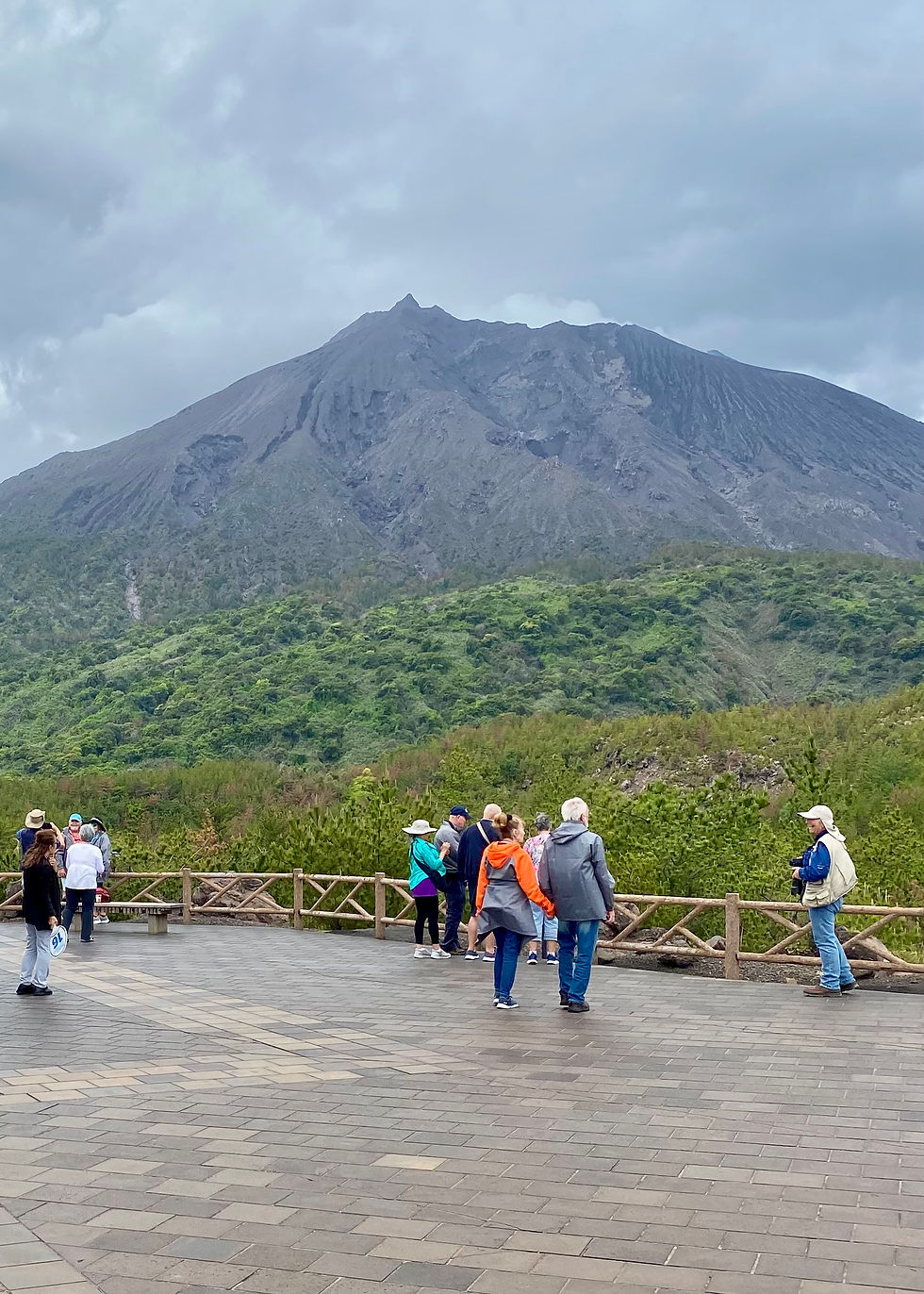
The observation deck is very nice, with a small pavilion just off camera. If you look carefully you can detect a small puff of steam blending in with the low clouds.

There were some interesting rock formations on the walkway up to the observation deck.

The view in the other direction. The sea isn’t far away.
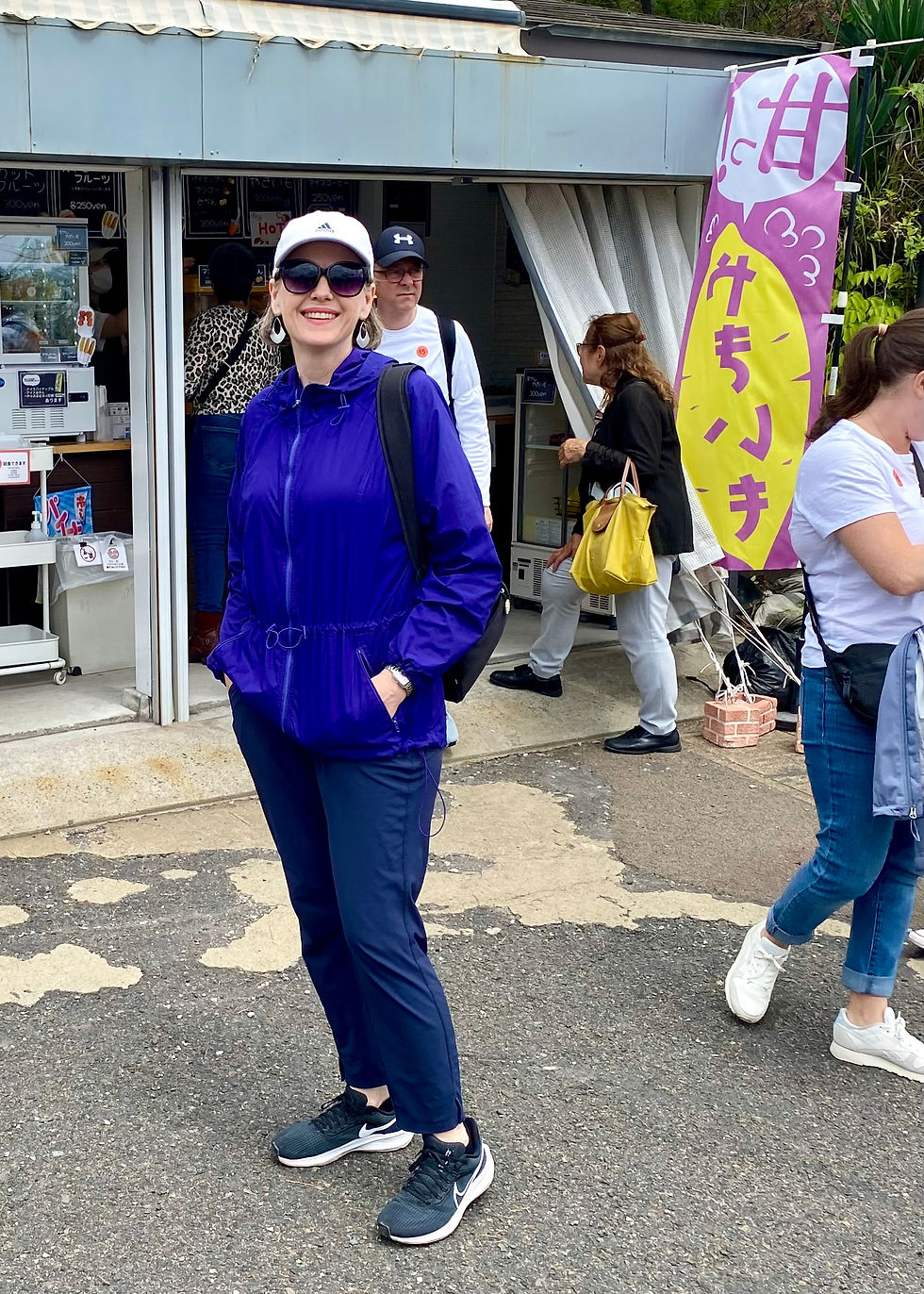
Michele outside the tiny shop where she bought a cup of fresh squeezed orange juice and a baked sweet potato.

At Sengen-en-Garden, home of a former Shimazu samurai lord. The architecture of the buildings was charming.

The grounds were beautiful too. I liked this tree.
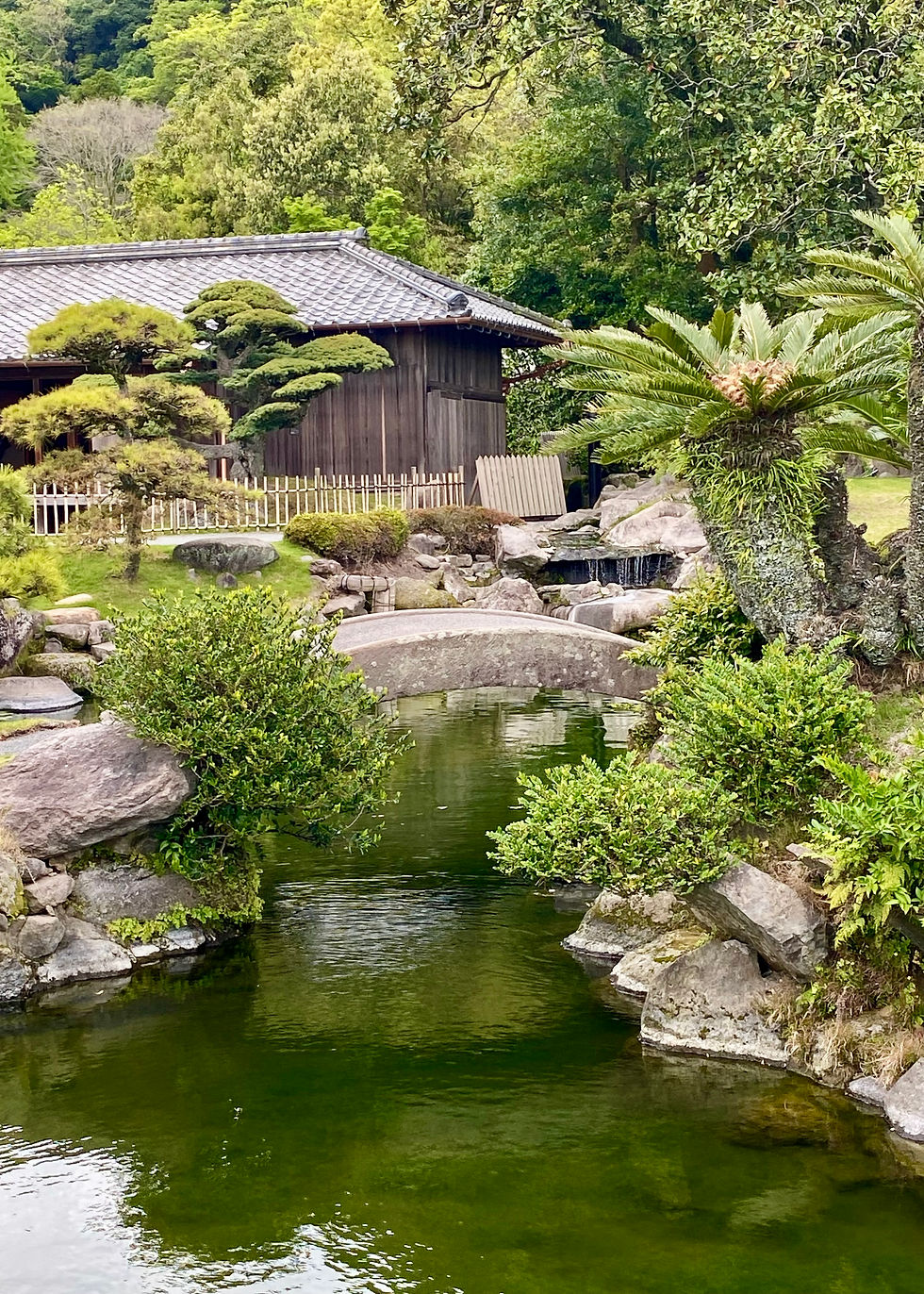
I don’t know who did his landscaping, but it was beautifully done.

Not sure what type of creature that is on top of the rock, but it’s certainly fierce.

There were stone lanterns in several locations on the property.

I wasn’t sure whether this was a moat or just an elaborately directed watercourse.

The pond was lovely. What a peaceful place for a samurai to live.

Shinto shrine up on the hill above the house.

This was a water powered rice husking machine.

And this building housed a water filtration system. This samurai waswas ahead of his time.
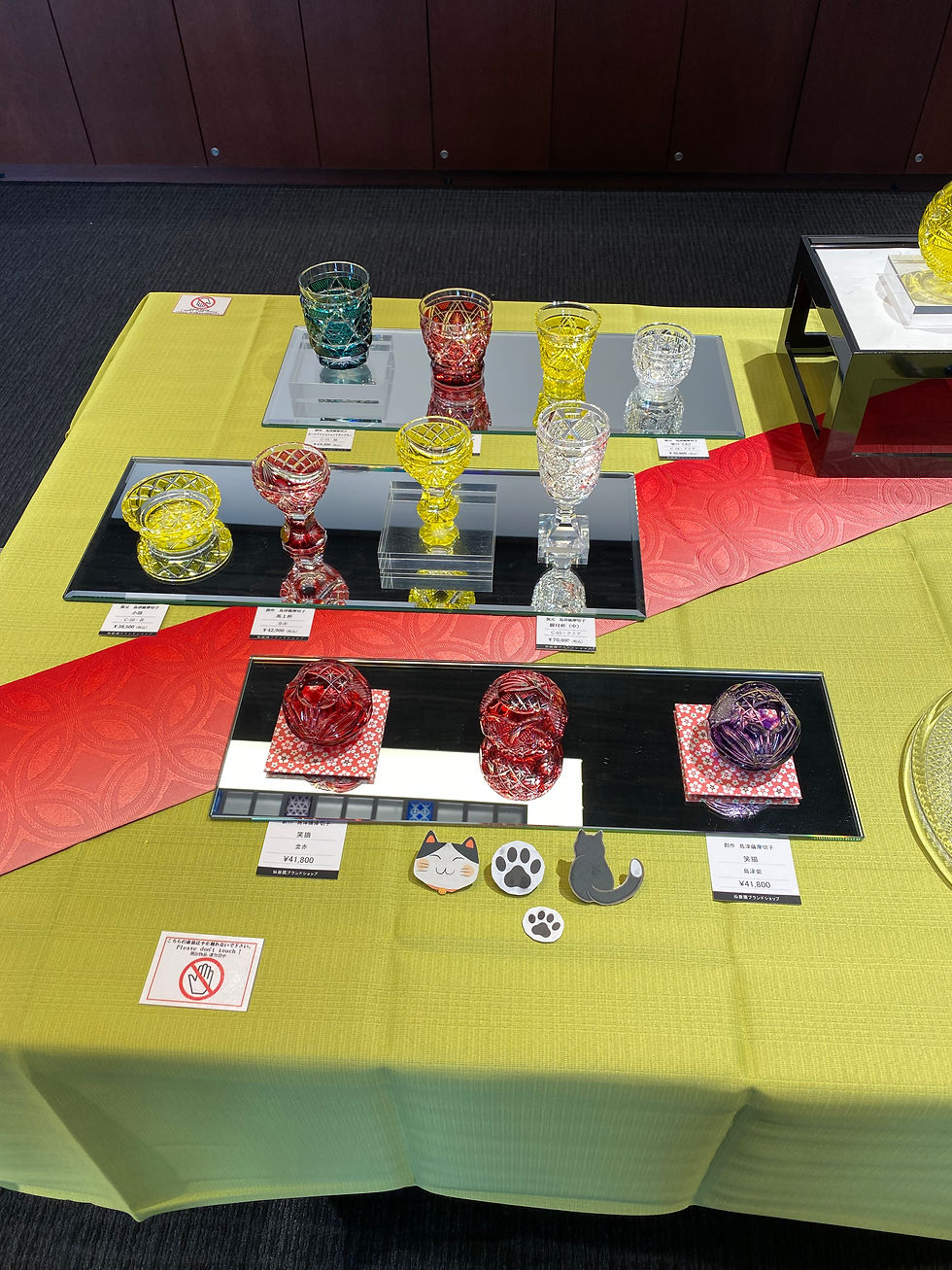
Some cut glass on display in the gift shop. Beautiful, but pricey.
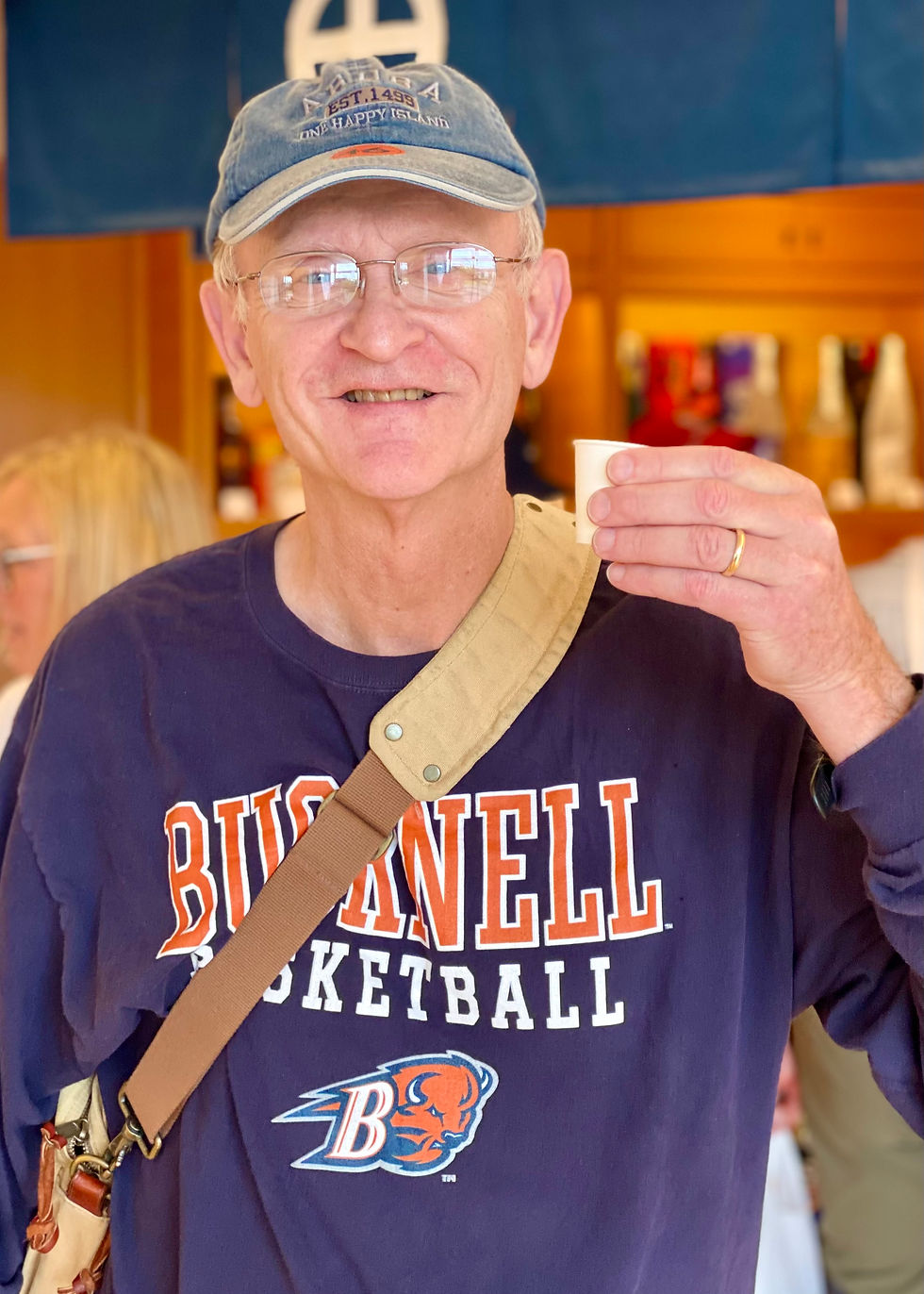
Scored a free sample of Komasa orange flavored gin. Tasty.

This is the stuff. If you’re into gin and can find it, I recommend it. Pretty tasty.
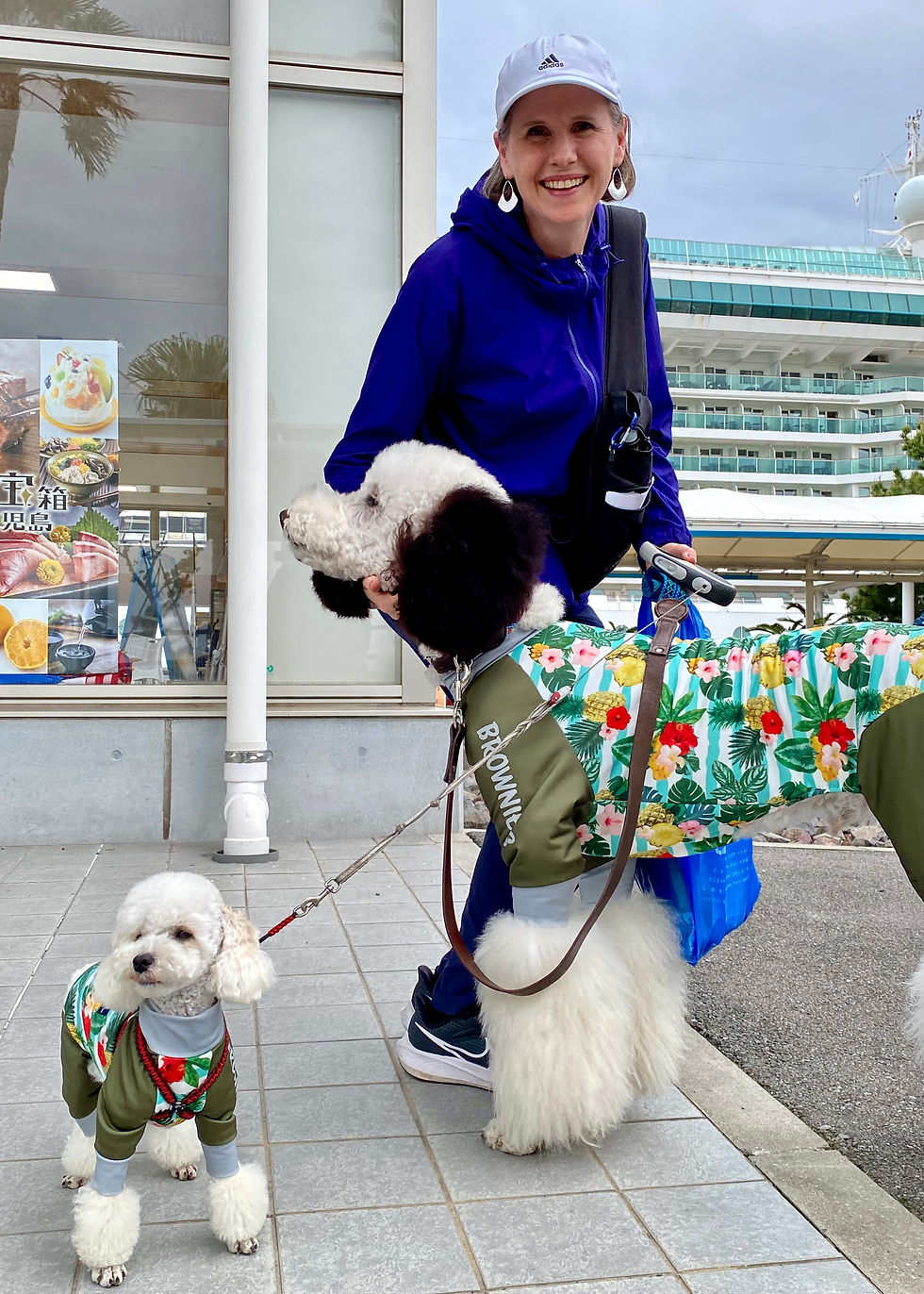
Back at the cruise terminal Michele made friends with a couple delightful dogs.


